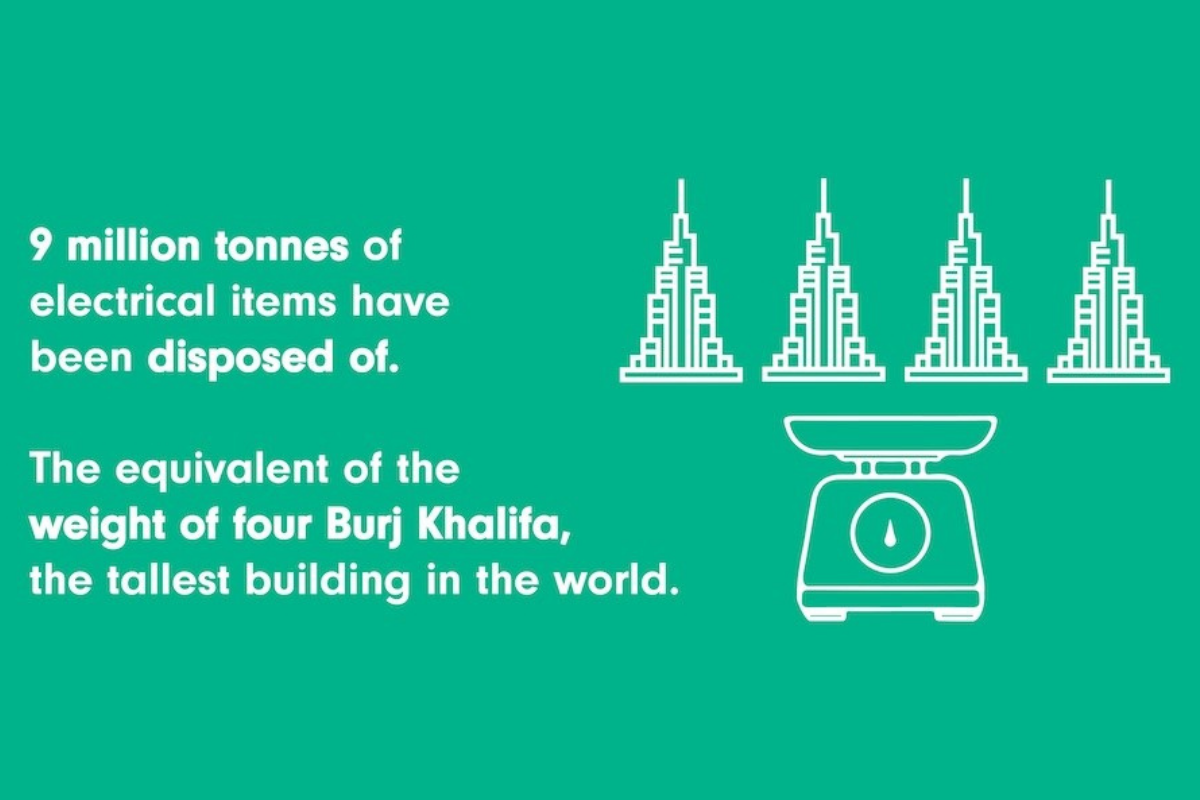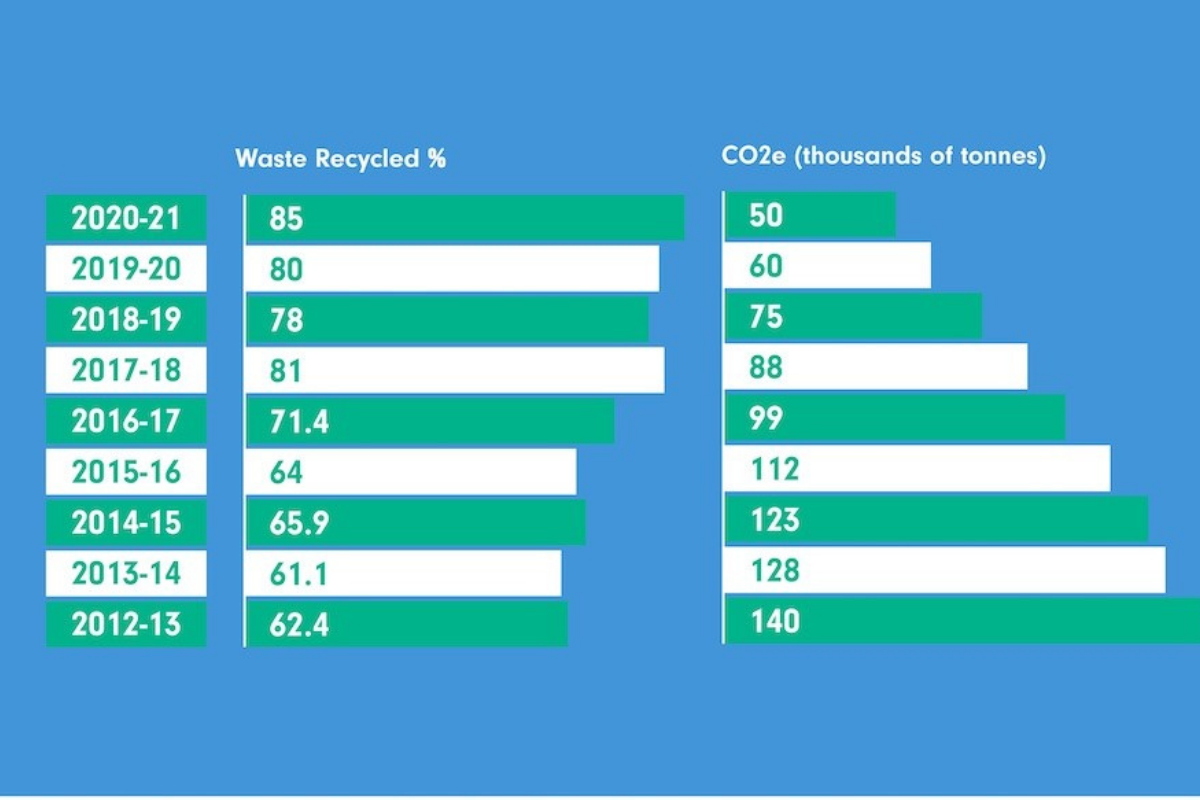2022 Global E-waste already weighs more than four Burj Khalifa
According to a live counter of e-waste in 2022 so far, over 9 million tonnes of electrical items have been disposed of. More than the weight of four Burj Khalifa (2.2 million tonnes), the tallest building in the world. Unfortunately, this is a growing problem, as total e-waste increases by at least 2 million tonnes per year. It’s expected to reach 120 million tonnes by 2050 if consumers don’t change their habits.
What is E-waste?
E-waste is any waste material with a power source, such as a battery or cable. Often found on everyday items in our homes and offices, such as fridges and laptops. When they are disposed of improperly, like being sent straight to landfill, they can become harmful.
Electronic items sent straight to landfill can be harmful to residents who live near the waste disposal sites. Toxins released from the items through skin exposure, ingestion or just inhalation can cause illnesses, brain damage or even kill anyone who is exposed.
The effects of COVID-19 saw an increased reliance on home office technology and entertainment, and therefore the amount of e-waste generated has also increased. What many people don’t realise is that metals like copper, iron and gold live in many electrical devices. Correct recycling of e-waste means these valuable assets can be recovered and used again.
Global Recycling Day
There are still 117 countries around the world that haven’t implemented any policy or regulation around e-waste, making global recycling day more important than ever. Global Recycling Day was created in 2018 to emphasise the importance of recycling and conservation by educating the world about the status of our essential resources.
Approximately 700 million tons in CO2 emissions were saved by recycling this year. This is set to increase to one billion tons by the year 2030. Many other people, organisations, and governments are directly endorsing the global green agenda, which facilitates higher recyclable numbers.
Tim Westbrook, director at Stone Group, comments:
“Over the last decade, there has been a looming e-waste crisis caused by the irresponsible disposal of redundant IT equipment. The crisis only began to be addressed in 2003, when the European Union issued a directive on the recycling of “Waste Electrical and Electronic Equipment”. Since then, the crisis has only intensified.
Without recycling, it’s estimated that £370 million is lost annually in valuable raw materials via e-waste, including copper and gold, which means more materials will have to be mined, pushing us further away from the vital goal of building a truly sustainable economy. We believe it is time to stop talking, act and stand up to stop the e-waste crisis engulfing the planet."
Statistics from: www.gov.uk/government/publications/hmrc-and-valuation-office-agency-sustainability-report/hmrc-sustainability-report-2020-to-2021
A 2021 WRAP report revealed that while 88% of UK households consider recycling an established norm, 9% admit to only recycling occasionally, and 3% say they do not recycle at all. On average, we dispose of 6.1 items incorrectly when sorting our household waste, putting non-recyclables in our recycling bins and recyclables in our rubbish bins. While three-quarters of us admit to checking recycling information on product packaging, research shows that up to 76% of us misunderstand what recycling labels mean.




